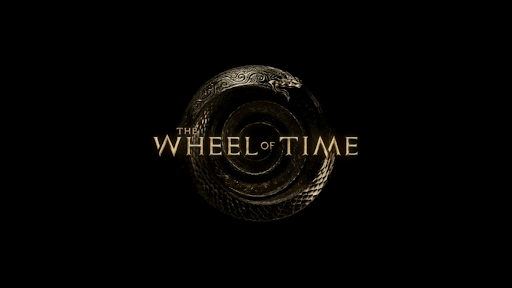
The debut episode of The Wheel of Time has some strong characters and thrilling imagery, though clumsy storytelling and some awkward tonal choices overall results in this series stumbling out of the gate. Reliance, perhaps overly so, on aging fantasy-genre tropes in order to appeal to a mass-audience leaves the series still searching for its own identity.
Comparison to other fantasy giants is unavoidable, but I think this is one that should be given a chance as it has the legs once it finds its stride.
Sometime in 2015, I decided to finally start reading The Wheel of Time. I grew up reading The Lord of the Rings and, as a young adult, consumed the entirety of A Song of Ice and Fire (well, the ones that have been published anyway), so I figured Robert Jordan’s epic fantasy was the next logical step. First published in 1990, Jordan’s series was nearly twenty years in the making and spans fourteen books each ranging from 220,000 to nearly 400,000 words. The final three books were completed by the deft hands of Brandon Sanderson after Jordan’s untimely passing in 2007.
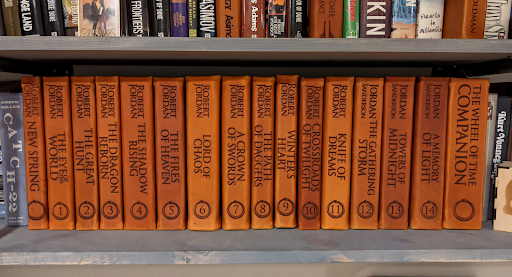
That’s two authors, fourteen books, twenty years, and over 4.4 million words. I fell asleep during the first ten pages.
I could tell you that I’d had a long week and the moment I sat down to read that day I was destined to slumber, but the reality is that the crushing weight I felt trying to tackle this massive undertaking of epic fantasy genius was simply too much for my twenty-something-year-old psyche to handle.
I imagine Amazon, despite the $80 million backing them in this venture, still felt a shred of that dread upon deciding to bring this series to life. Of course, it’s not my job to feel sympathy for Amazon, but instead to figure out what this show is all about and if it’s any good.
Typically, by the time a book series like this has been adapted for film or television, I’ve already read it and am eagerly waiting to see how the deep pockets and shallow understanding of the source material manage to screw the pooch (looking at you, Kingkiller). However, with Amazon’s adaptation of Jordan’s world, I feel a sense of levity at being able to enjoy the story and become engrossed in the world without having to worry about nitpicking every detail they may or may not have gotten wrong. I am, for all intents and purposes, going in blind and, so far at least, I largely like what I see….largely.
Episode One, “Leavetaking,” opens with a woman of the Aes Sedai, Moiraine Damodred (Rosamund Pike), donning some adventuring gear with a voiceover telling us that the “world is broken” and that men with great power from ages past were responsible. One of these men in particular, whom the Aes Sedai, a league of women-only magic users as far as I can tell, have named Dragon, has apparently been reborn and it is now Moiraine’s quest to find this reborn Breaker of Worlds for reasons that are not, as yet, known.
There’s loads of backstory here that most definitely needs to be read in order to have a firm grasp of what is going on (and thanks to Amazon’s “X-Ray” feature, scene-relevant backstory is available in sidebars in Prime’s video player itself). Lack of information aside, it’s a tonally awkward opening with the sole purpose of hamfisting in some of that much-needed backstory. In novel form, it’s the equivalent of the author laying down paragraphs of exposition before meeting a single character. Is it unforgivable? No. Lazy? You bet. However, to be fair, from what I know of the history of this world, it would have taken an entire episode to explore the events leading up to where Moiraine’s story begins. Much like the voiceover introduction that kicks off The Fellowship of the Ring, it’s a necessary concession when trying to adapt fantasy worlds with such rich and detailed histories. I’ll let it slide.
Next we see two men fleeing a band of horsebound women while Moiraine watches from a cliffside above. These women, clad in red robes and presumably also Aes Sedai from the lavish rings they wear, corner the fleeing men with no intent other than to kill them. The lead pursuer speaks of the One Power, the magic used by the Aes Sedai, being meant for only women and that the men who “touch” this power inevitably corrupt it, and are turned mad by it. This madness is apparently illustrated by the fact that one of the two fleeing men suddenly disappears, calling into question the sanity of the lone male about to be destroyed. Are the Aes Sedai right? Has this man been driven mad by “touching” the One Power? Was he imagining his companion the whole time? Or was it his companion who had the Power, which he used to escape certain death?
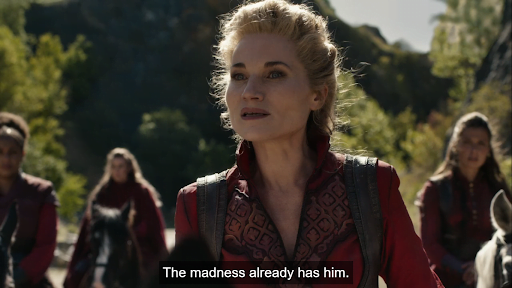
I’m sure there’s an explanation here, but it’s a very ambiguous scene and I was left with a lot of questions right off the bat. Unfortunately, since things are moving fast, I found myself unable to fully mull over these questions before Moiraine, accompanied by her Warder (read: bodyguard… I think), Lan Mandragoran (Daniel Henney), states that “It’s not him” and that the real potential reincarnations of the Dragon are four youths in a far-off village in the mountains. Sure. What the heck? Let’s go with it.
It’s at this point that we meet our four protagonists and potential Dragons (though I’m not exactly sure what that means yet). First, Rand al’Thor is a country boy who lives in the mountains. Rand and his father travel to the village of Emond’s Field where friends are waiting: Perrin Aybara (Marcus Rutherford) and Mat Cauthon (Barney Harris), a village blacksmith and vagabond with a gambling problem, respectively. Rand, Perrin, and Mat play off each other nicely and I look forward to seeing how they help each through their struggles as the show continues.
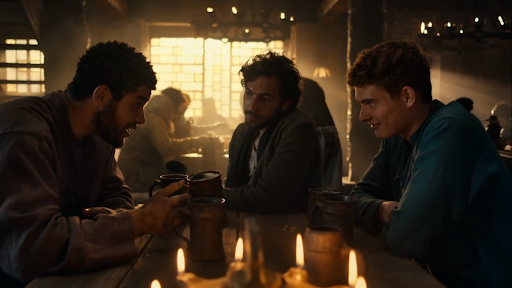
Last but not least, there’s Egwene al’Vere, who we first meet undergoing a trial by… river(?), the first rite on the path to becoming the next Wisdom, a village healer and leader who cannot wed. Rand is frustrated by the latter, but supportive, as the two are an item and Egwene is unwilling to deviate from her magical calling simply for his sake.
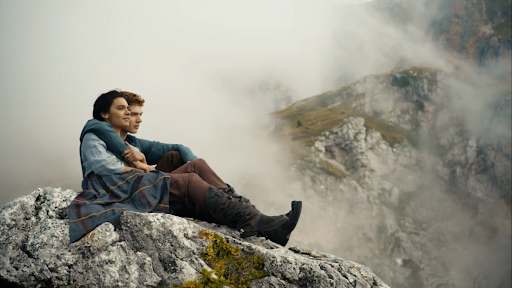
We get a touching scene between the two before all hell breaks loose. Creatures called Trollocs attack and decimate the village under the command of a hooded, eyeless being that looks like the lovechild of Voldemort and the Mouth of Sauron. In the chaos, Rand’s father is wounded, Egwene can’t yet heal people and feels helpless, Mat tries to keep his family safe, and, most heart-wrenchingly, Perrin accidentally kills his wife (also a blacksmith) while battling Trollocs in their forge.
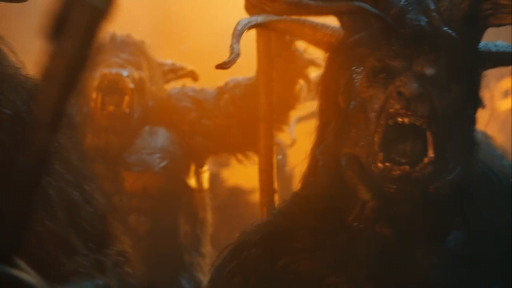
Moiraine and Lan show up to save the day. Lan is an elite swordsman and Moiraine demonstrates the One Power as she lays waste to the hordes of Trollocs, summoning bolts of lightning and rays of light to aid her. The Trollocs are defeated (for now), but Moiraine is wounded and, despite her ability to heal others, she cannot heal herself, a limitation of the Aes Sedai power.
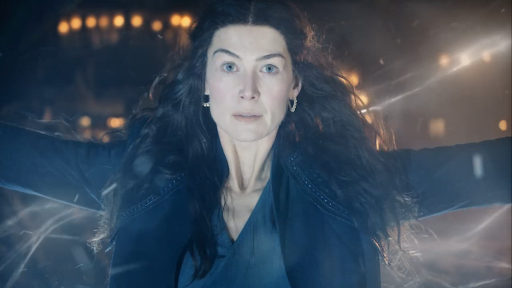
The bottom line is that all of our heroes survive and with the Trollocs regrouping, Moiraine convinces the four maybe-Dragons to travel with her to the White Tower in order to keep the Trollocs away from the village. Secretly, Moiraine wants to recruit the maybe-Dragons and use them in some capacity in the fight against the Dark One, an ancient evil that has awoken. They leave the village and their journey begins.
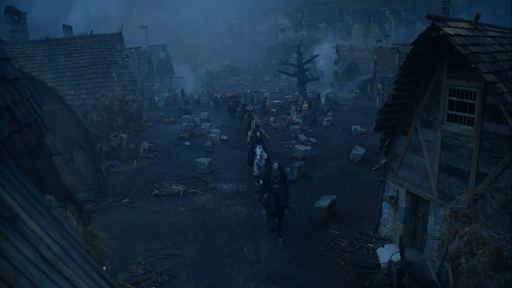
My first impression of this show was that it lacked the grit and groundedness of a show like HBO’s Game of Thrones (which Amazon is obviously trying to imitate with a multi-season fantasy epic of their own). This world is bright and colorful and presented with a levity that I’m simply not used to. Where a show like Thrones would opt for a more brooding, classic, and symphonic soundtrack to accompany the dour and brutal setting, Wheel features energetic, contemporary, and electronic instrumentations that could, at times, pass as the latest offering from a modern power metal band. Coupled with the use of heavy CGI, I get the sense I’m watching something elevated from reality which makes things feel less, well, real, which I know is a strange thing to say when talking about a fantasy show.
To top it off, the use of magic in the final battle scene of this episode contributed to this effect. Waves of baddies being annihilated by effortless magical incarnations sweeping and swirling around a lone channeler? It sure is a spectacle, but at times feels lifeless. Again, I know this is a strange criticism to levy at a fantasy show, but when compared to Game of Thrones, a show that revels in the usage of practical effects to gut-wrenching, hardly-able-to-watch ends (and that was arguably at its worst once heavy use of magic took centerstage in the later seasons), The Wheel of Time sometimes feels like Thrones mixed with Saturday morning cartoons.
I want to stress that this isn’t necessarily a bad thing. Not all shows can be (or should be) Game of Thrones, but unfortunately, that’s the standard to which The Wheel of Time will be compared, at least until it does something to separate itself and gain its own identity. Is the magic enough to give Wheel legs of its own? Maybe, but so far it feels like a hindrance.
Storywise, my main takeaway from this first episode are the questionable intentions of Moiraine and the Aes Sedai. Do all men really go mad when encountering the One Power? Or are they just trying to preserve the use of the Power for themselves? Generally, anytime a person or group claims that only they are capable of wielding a certain power, and then they use that power to wantonly kill those deemed “unworthy,” I get skeptical.
The characters are enjoyable, though I think they still have plenty of room to grow, which is a constructive way of saying that they are a bit flat and predictable at the moment. Really though, after one episode, what else can you expect? Characters don’t live and die by how they are when you first meet them, but how they respond to struggle and grow as a result. However, I will say that there are a lot of “chosen one-y” vibes and “mysterious ancient evil” this and that which are tropes that feel very Thrones-ey, if not like most other fantasy series out there.
In a strange twist of fate, and I point this out to hopefully appease some of the Wheel of Time enthusiasts reading this, by the time George R.R. Martin had debuted A Game of Thrones in 1996, Robert Jordan had already published six books in his series. Given the presence of the many similar tropes between the two shows, coupled with the fact that Thrones aired its series finale in 2019, it’d be tempting to argue that The Wheel of Time is simply “copying” and capitalizing on the success of the “OG” of the paid-subscription network, fantasy-adaptation-based-on-legendary-book-series genre. However, by all accounts, Robert Jordan and The Wheel of Time did it first (including finishing the book series— I know you’re not my bitch, George, but come on).
At this point, I find myself wishing that I had not fallen asleep on that fateful day in 2015 and had the breadth of knowledge from the Wheel book series to fully apprise myself of what’s going on in this world. There are a lot of things for any fantasy fan to latch onto and most of my gripes are with the presentation of the show and not necessarily the content itself. The earlier seasons of Thrones were a hit largely due to the show not getting in the way of the source material and I hope that’s not a mistake that Amazon will make. This world deserves a faithful and loving adaptation.
In any case, I’m definitely going to watch episode two and will be back with another review upon doing so. Cheers!
Sean Cahillane is a science fiction and fantasy writer based in Massachusetts. You can find him at @thesean_mc.

